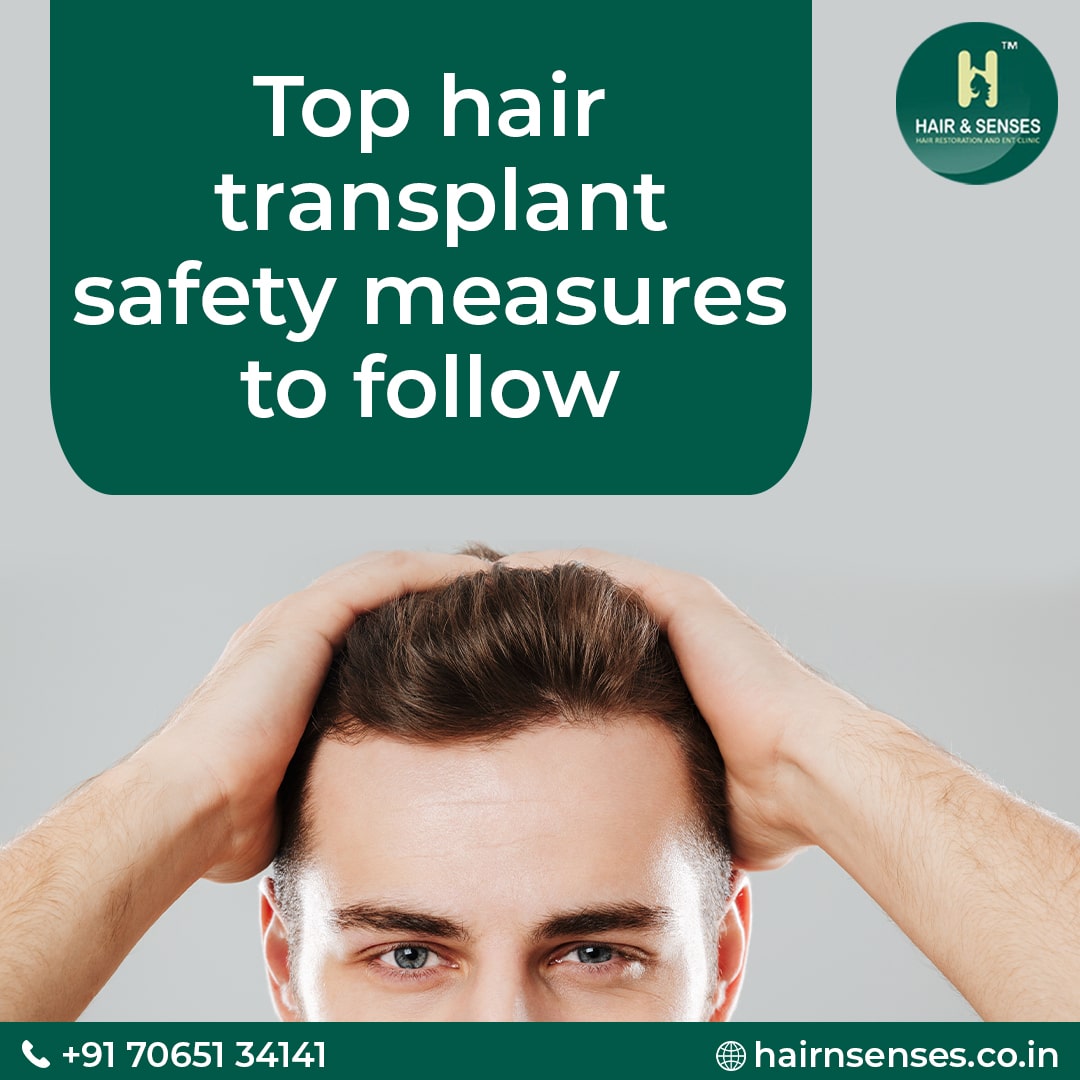Top hair transplant safety measures to follow
October, 18 2019 | By Dr. Sangay Bhutia (Hair Transplant Specialist in Delhi)
Hair transplant, which is the only permanent solution available for hair loss and baldness, is giving hope and a new lease of life to those suffering from pattern baldness. Hair transplant surgeries have been available for years now, and tens of thousands of people in India and the world undergo these procedures every year. However, the popularity of the procedure has also meant that numerous clinics have mushroomed across cities, and not all of them are capable of handling these surgeries well. Therefore, for everyone getting a hair transplant, there are couples of basic safety measures to be followed, both while finding the right surgeon and clinic, and following the right pre- and post-surgery precautions.

Here are some of the safety measures:
When patients start their search for the clinic, they should read up about the clinic online, ask for recommendations, either offline or online on forums, ask for before and after photos of previous patients at clinics, and choose a surgeon who specializes in hair transplants.
In terms of cost, patients need to be careful about how the clinic charges. Some clinics charge per hair while others charge per graft. Each graft may have 1-2-3-4 hairs. Many people don’t understand the difference and can be easily scammed by some clinics. Also, while money is an important factor, it makes sense to pick something where you are satisfied with the quality of the clinic and the experience of the surgeon instead of going for the cheapest option. For those travelling from different cities or countries for the procedure, the location of the clinic is important. Make sure you pick something well-connected and in a safe, clean area.
As mentioned, there are a number of clinics dotting cities, it is, therefore, better if patients can go take a look at the clinic themselves and see if they are clean, hygienic, and have the right teams and equipment in place. They should also meet the surgeon for consultation instead of consulting with someone else at the clinic.
One should make sure that the clinic is following strict sterilization and disinfection protocols like the procedure room is sterilized, all the instruments and consumables are either disposable or sterilized, the surgeon and the team is following proper OT etiquettes like wearing the OT clothes, cap, mask, and patient is also in OT dress and not in the cloth in which he comes to the clinic.
At a personal front, the patient should avoid both smoking and drinking at least a week to 10 days before the transplant. Both smoking and drinking can constrict the flow of blood in the body, which means that the essential nutrients that are flowing through the blood will not be able to reach the hair follicles. Especially in the post-transplant time it can affect the growth of new hair.
Patients also have to avoid blood thinners like Aspirin close to the procedure. Ideally the medicines should be stopped about 7 days prior to the procedure in after discussion with the treating cardiologist. The patient should discuss this during the consultation with the surgeon.
Patients should also avoid strenuous exercise, especially after the surgery. Any physical activity, which causes sweating or any contact sports should be avoided. Sweating increases the risk of infections post surgery. Patients can instead undertake some mild form of physical exercise like walking for about a week or two. Once the grafts are firmly in places, patients can then start exercising or playing sports.
Shampooing hair has to be done very gently with a mild shampoo. Patients should also not scratch or vigorously rub their scalp while shampooing, it can also dislodge the grafts. The crusting post-surgery will make you want to scratch your scalp, but it is an urge best resisted. The crusting will fall off on its own.
Styling products and hair dryers should be avoided as well for some time. While going out, patients can wear a loose hat if they want to but avoid any headbands or tight caps and hats; they can also dislodge the grafts.
The results of a hair transplant, apart from other things, depend on the experience of the surgeon, the quality of the clinic, and following pre- and post-operative procedures carefully. These measures will also help the patients in avoiding any kind of infection.
